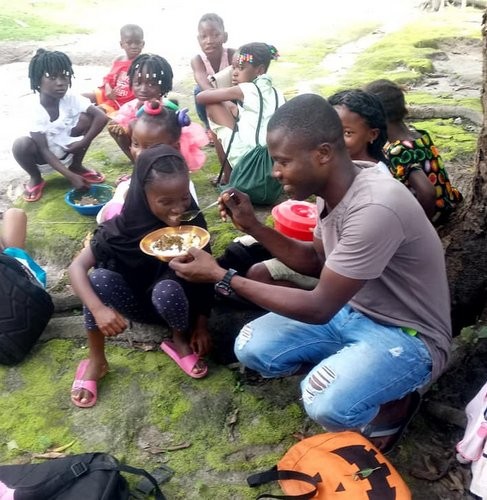Harvest of Hope
Feeding programs, similar to this one in Sierra Leone, are provided through schools to ensure that students receive at least one meal a day especially in the hardest hit months of July and August. Food insecurity affects much of the country, but is felt deepest among the most vulnerable, Sierra Leone's youth.
While Sierra Leone is home to some of the world's wealthiest resources like gold and diamonds, over half the population lives below the poverty line. Many rural families farm for a living, but are not meeting their own nutritional needs. An estimated 90% of farmers are only able to provide one meal a day for their large families.
Subsistence farming is a way of life for many rural families in Sierra Leone. Because they are manually working the fields they are simply unable to plant enough crops to harvest for market. Those few who do manage, need to pull their children from school to have them work the fields and sell the produce in markets and along the roadside.
With imported rice prices on the rise, many children simply go to bed hungry. It is not uncommon to find kids begging in the streets for food or even going through trash for any small remnants. Proper nutrition in the classroom became a priority to educators out of necessity. Schools began working to provide meals for students to boost academic performance, develop cognitive thinking, reduce drop outs, and most importantly, improve overall health.
In Lunsar there was no organized feeding program in place in the local school, so Karim Kamara decided to start his own. Karim imports our containers and helps repair, distribute, and maintain the bikes we donate to Village Bicycle Project. He grew up in Lunsar and knows the hardships associated with going to bed hungry.
Karim uses the money he makes as a mechanic to buy imported bags of rice to help feed school children during the month of August. He notes this is the rainy season and the weather pattern seems to be getting longer and wetter every year. During this period farmers are unable to get into the fields to do any work and many families suffer the greatest food shortages.
When he set out to start this program he thought he might feed about 20 kids for a couple weeks. Instead he ended up feeding 100 for a month. He would like to find a way to expand the program to include July. This past year he had to have kids double up on plates because they simply didn't have enough bowls and spoons to go around.



11720 Parklawn Dr
Rockville MD 20852 703-740-7856 Contact Us